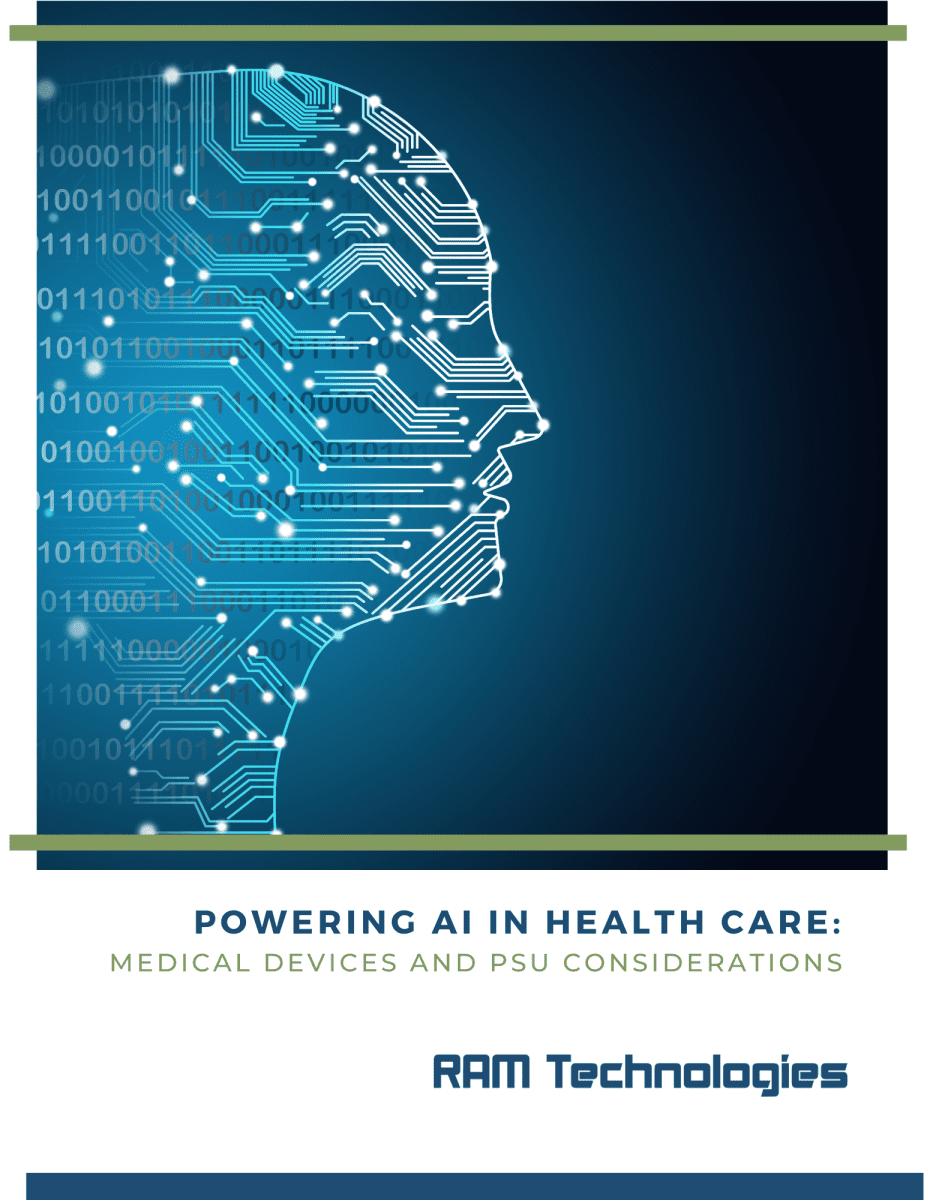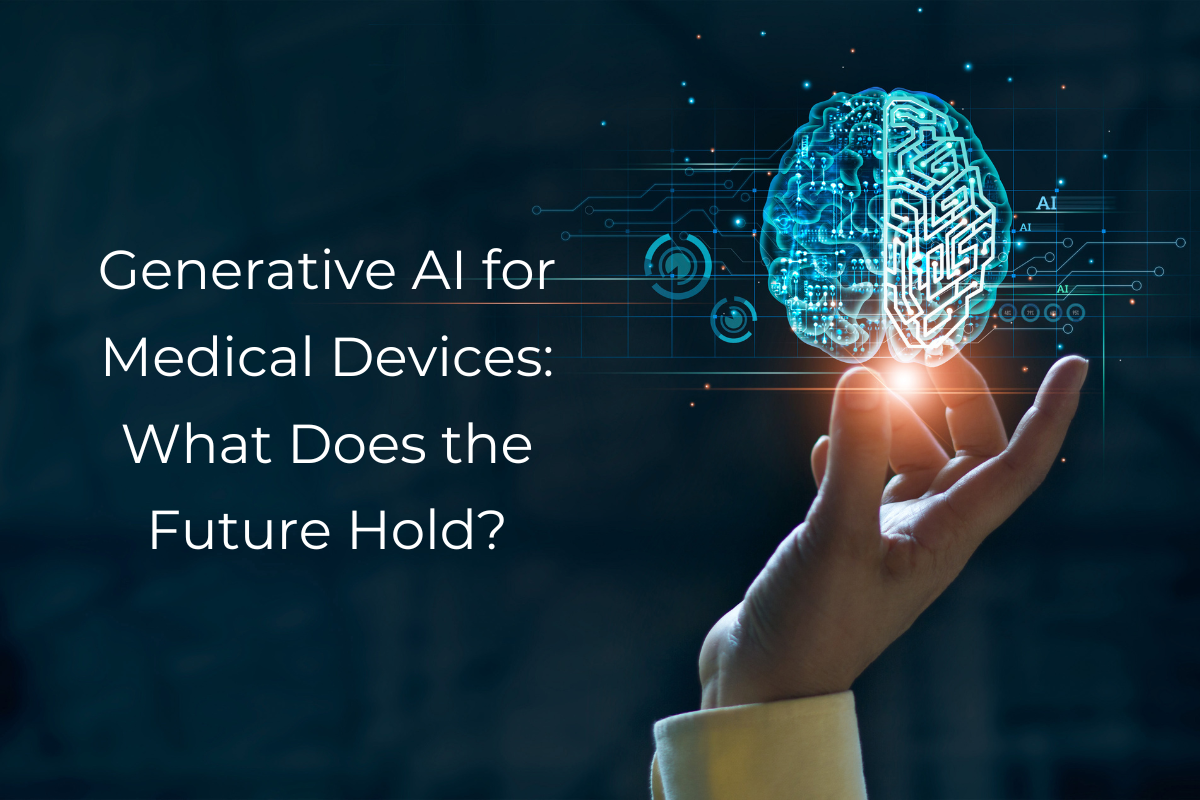Generative AI and large language models (LLMs) have made their way into the regular repertoire of many different types of businesses. This technology can be used to respond to customers via chatbots, create marketing copy for new campaigns, or analyze data to uncover new patterns and drive discovery forward. But what about generative AI for medical devices?
Organizations that leverage generative AI and LLMs to their fullest potential can elevate the customer experience, and if used effectively in health care, these resources can improve patient care.
How far away are we from seeing this technology in medical devices? Are there devices already using artificial intelligence in these ways? We’ll talk about what generative AI and LLMs are, use cases for medical devices, impediments to their use, and power supply needs for this resource-intensive technology.
What is Generative AI?
Historically, artificial intelligence was used to analyze existing datasets and form analyses from what was gathered. Generative AI takes this a step further by creating new content that builds off of preexisting data. To be useful, this form of AI needs a very large set of data to draw from. Output with generative AI can include text, 3D models, code, music, and images, for example. It’s also important that generative AI is trained on relevant data. This way, users get the type of output they’re expecting.
What are Large Language Models?
Large language models can be used in conjunction with generative AI to get users that expected result. LLMs can process and generate human-like text and can be used to answer questions, translate words, and create new content. While generative AI can be trained on different type of data, such as images and text, LLMs are mostly trained on large amounts of text data.
Use Cases: Generative AI for Medical Devices
Recently, medical journals have been publishing reviews and editorials about the use of generative AI and LLMs in healthcare, and how the technology might be implemented in the future.
A Review of Foundation Models Using Electronic Medical Records
A July 2023 Nature article looked at 84 foundation models that were trained using electronic medical records (EMR) data in clinical text or structured data form. What they found is that most of the models they analyzed were trained either on on small datasets with narrow scope, or on large, broad, public bodies of work. So far, these models haven’t been evaluated in a way that indicates whether the tasks they can perform are meaningful for real patients. The authors assert that the following criteria can be used to determine which systems will be useful in specific clinical settings:
Predictive performance
Are the predictive abilities better with a model compared to a human?
Model deployment
What is the cost of building the model and deploying it? How does it compare to the time saved from the results of the model? In simpler terms, what’s the return on investment?
Data labeling
When you use more detailed labels to explain the number of training examples used to generate a result, does the model perform similarly for lower numbers compared to higher numbers?
Multimodality
Most tests for AI models only look at one type of information, which could be only text or only images, for example. Better tests can challenge AI models to understand this information together. Clinicians need to interpret images, text, and sometimes video concurrently, and if AI is able to achieve this level of multimodality, it becomes significantly more useful.
Emergent clinical applications
The researchers use this example with emergence: Say your models are able to produce new test questions to prepare students for exams. If they’re not better prepared, and the burden for creating questions has not decreased, is this an emergent application where generative AI and LLMs are useful? If the output doesn’t improve outcomes – say, diagnostic criteria doesn’t improve the prognosis of a patient – is it beneficial to use the technology?
Novel human-AI interfaces
How do machines based on prompts given to them? The responses should be in natural language and provide a useful answer.
An editorial responding to this review followed in 2024. The response included advice on how these models might be implemented in the future. New EMR LLMs are currently being developed. These mostly focused on taking notes, summarizing a patient visit, and auto-drafting time-sensitive responses to patients.
How is Generative AI Currently Being Used in Health Care?
While there is a need for further evaluation and stringent processes to get to market, generative AI is already being used in different parts of the world by medical technology companies. Meticuly, in Thailand, is using generative AI to create personalized bone implants based on patient CT scans. NuVasive, in the U.S., creates titanium spinal implants with generative AI and 3D printing.
Boston Consulting Group has identified more than 60 use cases for generative AI. These include automating patient-clinician interactions through medical devices, summarizing meetings, and conducting generative product design.
Considerations for Generative AI for Medical Devices
Before generative AI and LLMs become widespread in medical devices and healthcare in general, developers and medical device manufacturers need to take a holistic look at the technology and weigh its potential benefits and drawbacks.
Training
Training LLMs for medical applications currently requires massive datasets. Attaining these sets requires patient consent, and the processing requires immense computational power.
Privacy
Outside of the training process, introducing so much data into AI models can become a data privacy issue. This is another tool handling sensitive patient information. Developers need to abide by secure data handling techniques.
Bias
AI has the potential to democratize care. However, developers and manufacturers need to be mindful of the bias that can inflict these models.
Regulation
The regulatory landscape is still taking shape. The FDA has cleared some AI-enabled devices. Still, more rules and regulations are likely to come out around generative AI and LLMs and their place in medical equipment.
Power
If generative AI is applied to medical devices, manufacturers need to ensure they have a power supply unit (PSU) that is able to handle the computing. Cloud-based solutions and graphics processing units (GPUs) are also essential.
RAM Technologies Power Supply Units are Ready For What’s Next
Manufacturers will have to face some challenges before bringing any AI-enabled medical devices to market. In addition to the usual guidelines, they’ll have to adapt to regulation as it unfolds.
RAM Technologies develops PC-based PSUs specifically for medical device manufacturers to help you meet current needs and grow into what’s next. Because our products are created with the medical market in mind, and are fit for high-powered computing, you know that you’re adding a component that’s built to last. Our mean time between failures (MTBF) is consistently calculated close to one million hours. This is only possible with careful design and high-quality components.
Learn more about our PSUs designed for the medical device market, and tell us what you’re developing today! Contact us and check out our product page for more.
RAM Technologies’ power supplies are 60601-1 3.2 certified and meet 60601-1-2 EMC standards. When you’re designing your medical device and need help with a PSU, contact us for details.

Download the AI/ML Summary
Artificial Intelligence and Machine Learning (AI/ML) are changing the medical device landscape. Get a summary of the latest trends and where we think AI/ML can go with medical devices by downloading our guide.
More Resources:
Predictive Analytics in Health Care and PSU Considerations
Trends in FDA-Authorized AI/ML Devices
AI Medical Devices and FDA Approval: A Review in the Lancet
